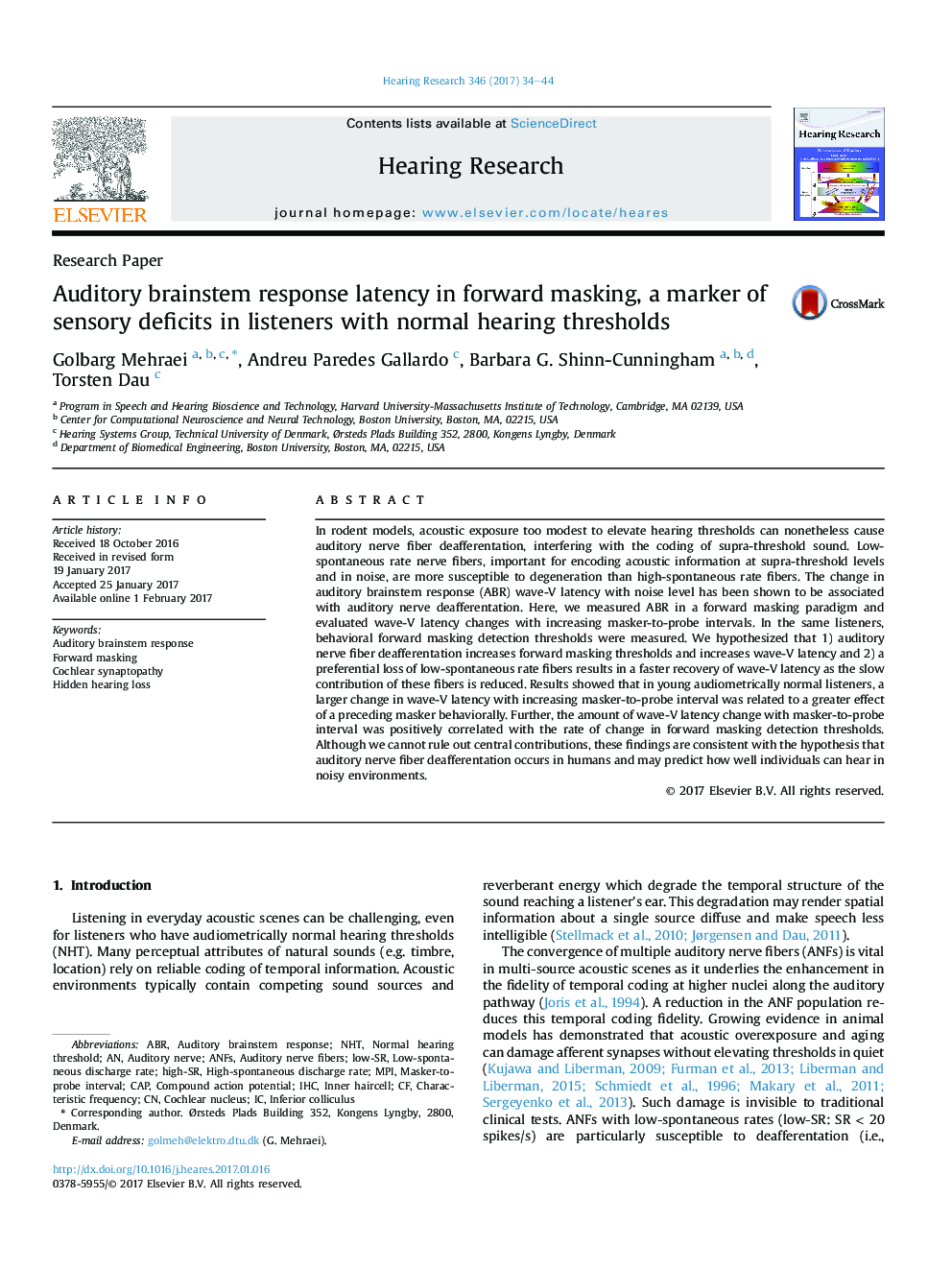| Article ID | Journal | Published Year | Pages | File Type |
|---|---|---|---|---|
| 5739481 | Hearing Research | 2017 | 11 Pages |
â¢Auditory brainstem response (ABR) wave-V latency was measured in forward masking.â¢Individual differences in forward masking ABR and detection thresholds were large.â¢Forward masking wave-V latency shifts predict forward masking behavioral thresholds.â¢Model simulations suggest that auditory-nerve loss affects ABR in forward masking.
In rodent models, acoustic exposure too modest to elevate hearing thresholds can nonetheless cause auditory nerve fiber deafferentation, interfering with the coding of supra-threshold sound. Low-spontaneous rate nerve fibers, important for encoding acoustic information at supra-threshold levels and in noise, are more susceptible to degeneration than high-spontaneous rate fibers. The change in auditory brainstem response (ABR) wave-V latency with noise level has been shown to be associated with auditory nerve deafferentation. Here, we measured ABR in a forward masking paradigm and evaluated wave-V latency changes with increasing masker-to-probe intervals. In the same listeners, behavioral forward masking detection thresholds were measured. We hypothesized that 1) auditory nerve fiber deafferentation increases forward masking thresholds and increases wave-V latency and 2) a preferential loss of low-spontaneous rate fibers results in a faster recovery of wave-V latency as the slow contribution of these fibers is reduced. Results showed that in young audiometrically normal listeners, a larger change in wave-V latency with increasing masker-to-probe interval was related to a greater effect of a preceding masker behaviorally. Further, the amount of wave-V latency change with masker-to-probe interval was positively correlated with the rate of change in forward masking detection thresholds. Although we cannot rule out central contributions, these findings are consistent with the hypothesis that auditory nerve fiber deafferentation occurs in humans and may predict how well individuals can hear in noisy environments.
